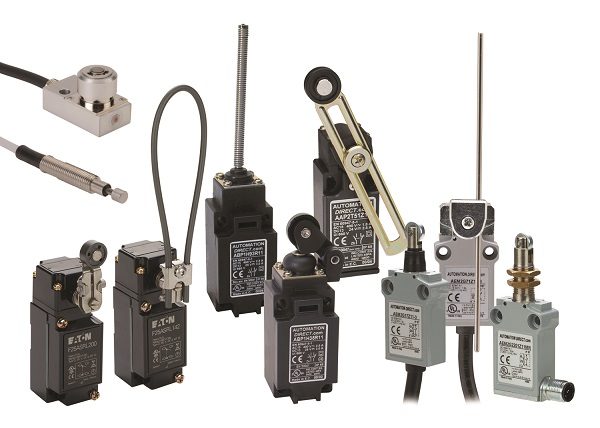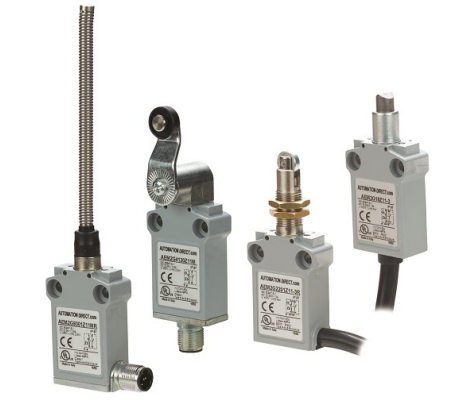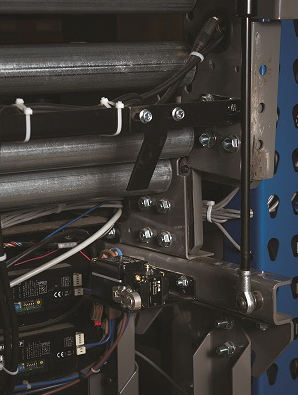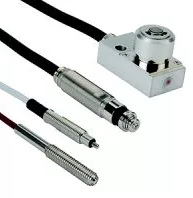When it comes to detecting position and presence in automated equipment, be sure to consider limit switch as choices available today are robust, and can provide high precision. While photo eyes and inductive switches are popular choices in many applications, precision limit switches can be a better option with repeatable accuracy less than a micron.
Tim Wheeler, Technical Applications Specialist at AutomationDirect, wrote an article titled Achieving Precision with Limit Switches, which ran in the November 2017 issue of Design World. Tim looks at different types of position sensing switches, and discusses use of precision limit switches in machine tool and robotic applications.
Tim says limit switches are a good option in many applications.
“Industrial limit switches are the battleships of the sensor world and have been used in manual, semi-automatic and automated machinery applications for over 100 years to detect presence and position of parts and mechanisms. These sensors come in several configurations including NEMA, Heavy-Duty IEC, Double-Insulated IEC, Compact, Miniature and Precision.”

The differences between NEMA and IEC limit switches are discussed in the article. NEMA switches are designed for more demanding applications such as heavy machinery, mining and foundries—while IEC limit switches work well in material handling and typical automated machines, and cost less.
Key Considerations
Here are some key selection considerations when using limit switches.
“Limit switches are suitable for use in a wide range of applications and harsh environments on the factory floor due to their ease of installation, reliable operation and rugged design. Limit switches are typically used in physical contact applications that cause wear and tear on the switch actuator and electrical contacts, so exceeding two operations per second should be avoided. When selecting a limit switch, consider the application and actuation method first, as often they are the clearer determining factors.”

Other presence and position sensing option should be considered such as inductive and photo-electric devices as they are touch-free. Being non-contact, and usually configured with a solid-state output, these devices work well for high-speed automation, but limit switches can also work well in similar applications.
“…there are many quality and long-lasting limit switches available. With a properly specified limit switch, it’s not unusual for it to have a mechanical life of 30 million actuations, and an electrical life of 5 million operations. The limiting factor is often electrical contact life, but replacement contact blocks are available for quick replacement at a low cost with some limit switches.”
Tim also covers applications for limit switches, showing how with careful design they’ll work well, and are easy to integrate and maintain.
Selection Criteria
Table 1: Selection Criteria for Limit Switches
- Actuation nethod
- Repeatability
- Travel to operate and reset
- Force to operate
- Contact configuration
- Environment requirements
There are many actuation methods such as levers, plungers and rods—along with a variety of actuation directions. The actual application and mounting orientation strongly drives the actuation method. Repeatability was also discussed.

“The repeatability of an assembled limit switch is determined by the type of operating head used. The switches with the best repeatability are the direct-operated pushbutton or plunger type, typically 0.003-in or less repeatable accuracy. The addition of rollers and operating levers adds tolerance stickup due to concentricity. The tolerance can easily double when rollers are used.”
Checkout an overview of industrial limit switches here.
Several limit switch design considerations were discussed as listed in Table 2. It’s important to consider these points to reduce potential problems.
Table 2: Limit Switch Design Considerations
- Mechanical life
- Sensor impact
- Switching frequency
- Maximum actuation speed
A big point is to limit impact and travel. While the switch can take a lot of abuse, avoid hard stops when possible, and minimize actuation distance or rotation. It’s also important to limit side loading as these can damage the switch. Shock and vibration should also be minimized because too much of either could actuate the switch and cause unexpected operation of a machine.
“As discussed previously, switching frequency must be less than 2 cycles per second as mechanical and electrical activations are limited. The actuation speed of a limit switch can be too fast or too slow as well. If activated too fast, the switch could bounce or wear quickly. Too slow of an activation, less than 50 mm/minute, can cause repeatability errors, especially in precision limit switches.”
Achieving High Precision
Tim next talks about precision limit switches.

“Traditional limit switches, proximity sensors and photo eyes are somewhat limited in terms of accuracy and repeatability, typically in the 25- to 100-µm range depending on the device. However, there are some cost-effective and ultra-precise mechanical limit switches with repeatability in the 0.5- to 10-µm range (Figure 4). Considering a human hair is typically 50- to 60-µm in diameter, that’s precise sensing.”
He pointed out that a switch with 0.5 µm repeatability can reliably detect thin sheets, and can be used in harsh environments such as a CNC machine tool with spray coolant. He also pointed out other applications.
“On automated machines and robots, there are many sensors such as vision systems, lasers and photo eyes. Finding the position of the tooling or part is often critical to operation. Precision limit switches are an excellent option to find a repeatable home or start position. Finding a position within 0.5 micron, 1/2000 of a millimeter, with a mechanical switch adds the word precision in front of machining and assembly.”
Limit switches are popular, robust and reliable if properly selected and installed. They can also be extremely precise when needed, opening up a wide variety of suitable applications.
For more information visit: https://www.automationdirect.com/limits
To read more articles related to process sensing and control, click here.

